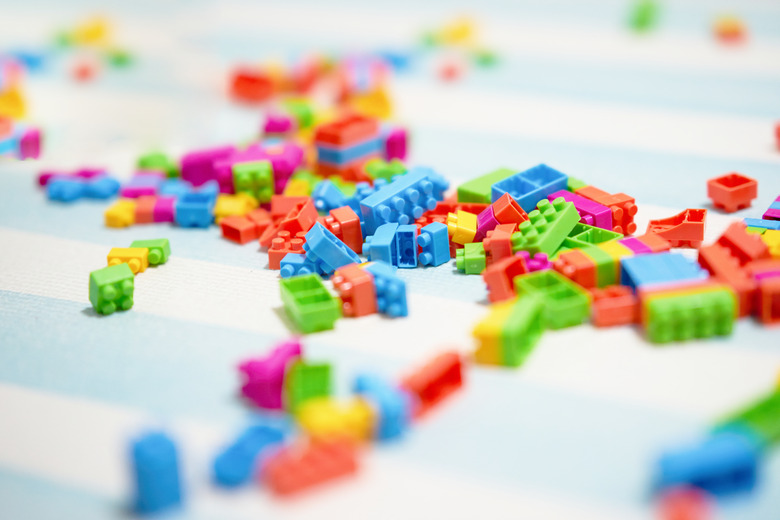How To Make LEGO DNA Models
Legos, the definitive children's building blocks, are an apropos way to model the building block of organic matter, deoxyribonucleic acid, more commonly known by its abbreviation, DNA. The process of making a model of DNA is suitable for children of any age who are old enough to play with Legos. To make an accurate model, you will need a few specialty Legos that will have to be bought specifically for the project.
Step 1
Divide the 80 1x1 round bricks into piles of 40, each with two of the colors. These four colors of round bricks represent the four nitrogen bases that make up the rungs of the DNA ladder: adenine, thymine, cytosine and guanine. Each rung contains a pair of nitrogen bases connected by a hydrogen bond. Adenine always pairs with thymine. Cytosine always pairs with guanine.
Step 2
Select a pair of nitrogen bases and connect the bricks with a connector peg, which represents the hydrogen bond.
Step 3
Attach a technic brick to each side of the nitrogen base pair. Technic bricks have a hole in the middle. Insert the round bricks into the holes to make the connections. These technic bricks represent the sugar phosphate compound on the sides of the DNA.
Step 4
Attach this first rung to your plate.
Step 5
Create another rung with two technic bricks, two round bricks and a connector peg. Attach this rung to the previous rung via the technic bricks, overlapping them by one. Make sure that the rung is attached so that it sets up a clockwise rotation, like true DNA.
Step 6
Continue the process until there are no more Legos.
Things Needed
- Flat LEGO plate
- 40 1x2 technic bricks
- 80 1x1 round bricks divided into four colors
- 20 connector pegs
TL;DR (Too Long; Didn't Read)
It doesn't matter in what order the pairs of nitrogen bases are placed, so long as the pairings are maintained; as in, You can have a adenine/thymine rung, followed by a adenine/thymine rung, followed by a thymine/adenine rung, followed by a cytosine guanine rung.
Warning
Be careful if you need to transport the model, as it can come apart. If you need a more permanent solution, glue each piece to the last.
References
Cite This Article
MLA
Sorin, Antonia. "How To Make LEGO DNA Models" sciencing.com, https://www.sciencing.com/make-lego-dna-models-5509183/. 9 October 2009.
APA
Sorin, Antonia. (2009, October 9). How To Make LEGO DNA Models. sciencing.com. Retrieved from https://www.sciencing.com/make-lego-dna-models-5509183/
Chicago
Sorin, Antonia. How To Make LEGO DNA Models last modified March 24, 2022. https://www.sciencing.com/make-lego-dna-models-5509183/
